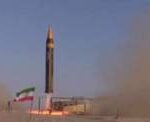
By: Tukur Faru
Iran-Israel Conflict: A Technological and Strategic Shockwave
As an ever student of engineering and a keen observer of international relations and conflicts. I have closely observed the evolving Iran-Israel conflict — especially its staggering display of advanced military technology. Among the most gripping elements is the complexity of modern missile defense systems.
An Israeli missile fired toward Iran covers nearly 2,000 kilometers with minimal interference. But in the reverse direction, an Iranian missile faces an unprecedented gauntlet.
To even reach Israeli airspace, an Iranian ballistic missile must first evade:
- U.S. military systems in Iraq
- French Rafale jets in the UAE, with Saudi-approved airspace
- The USS Carl Vinson strike group in the Gulf
- Jordanian and U.S. air defenses in Jordan
- British RAF jets from Cyprus
And that’s just the beginning.
Surviving this transnational wall of steel and radar, the missile must then confront Israel’s formidable multi-layered defense:
Arrow-3: Exo-atmospheric interception
Arrow-2: Mid-course re-entry defense
David’s Sling & Iron Dome: Mid to short-range interception each tier is a marvel of Western engineering, funded and developed by the U.S., NATO partners, and Israel.
Now consider this: Iran’s missiles are domestically built, under crushing international sanctions. Yet, they’ve not only challenged this layered fortresses — they’ve broken through, striking with devastating precision.
Even a single Iranian missile landing in Tel Aviv isn’t merely a military feat — it’s a geostrategic shockwave. No missile in modern history has pierced such an extensive and technologically integrated shield.
Underestimated for too long, Iran’s asymmetric warfare is not just impressive — it’s revolutionary.
The lion has roared louder than anyone dared to image. i
Tukur Faru The New North.












